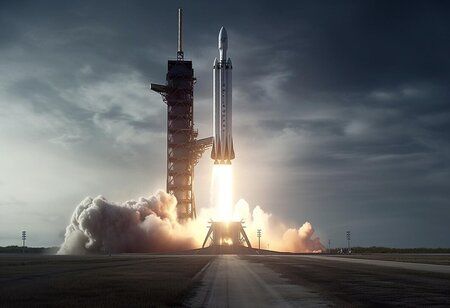SpaceX with Starship Aims to Reduce the Cost of Rocket Launches by Ten Times
By Consultants Review Team
 Not only was SpaceX's Starship launch on Thursday visually stunning. It may have signaled a significant shift in direction for the space sector. Elon Musk's massive mega-rocket, which was not carrying any humans or a payload, failed to survive Thursday's landing.
Not only was SpaceX's Starship launch on Thursday visually stunning. It may have signaled a significant shift in direction for the space sector. Elon Musk's massive mega-rocket, which was not carrying any humans or a payload, failed to survive Thursday's landing.
However, it did travel across space, retreated through Earth's atmosphere, and then burst, marking a turning point in SpaceX's history exactly twenty-two years after the company was established.
With the Starship-Super Heavy launch system developing so quickly, there is great optimism that the 400-foot-tall monster will be fully operational and reusable very soon.
Elon Musk's goal of bringing launch prices down to about $10 million is dependent on the mega-rocket, which is an important step for entrepreneurs trying to establish their futuristic space enterprises such as space factories or asteroid mining.
"With Starship, SpaceX is poised to slash launch costs by an order of magnitude again," said an email sent on Thursday to Business Insider by Brendan Rosseau, a Harvard Business School teaching fellow who is penning a book about the space business.
It is the largest launch mechanism ever created, Starship-Super Heavy. Twice as much thrust can be produced by the Super Heavy booster that launches Starship into orbit as by the rockets that carried Apollo astronauts to the moon.
It should be able to send up to 150 metric tons into orbit when it is finished. That's a large load. In contrast, every launch of SpaceX's workhorse, Falcon 9, delivers about 50,000 pounds into low-Earth orbit. This allows for significant economies of scale because more payload might be launched with each launch. However, it also helps businesses spend a lot less money getting their cargo ready.
"Throughout spaceflight history, a rocket's payload has been attached by shrinking it. Additionally, reducing it basically means spending a lot of money on technology," Abhi Tripathi, the head of Mission Operations at the Space Sciences Laboratory at the University of California, Berkeley, told BI on Friday.
"You have the option to change that equation in starship. You can employ less sophisticated technologies with it. Use anything off the shelf; don't waste time downsizing and miniaturizing your stuff," he said.




